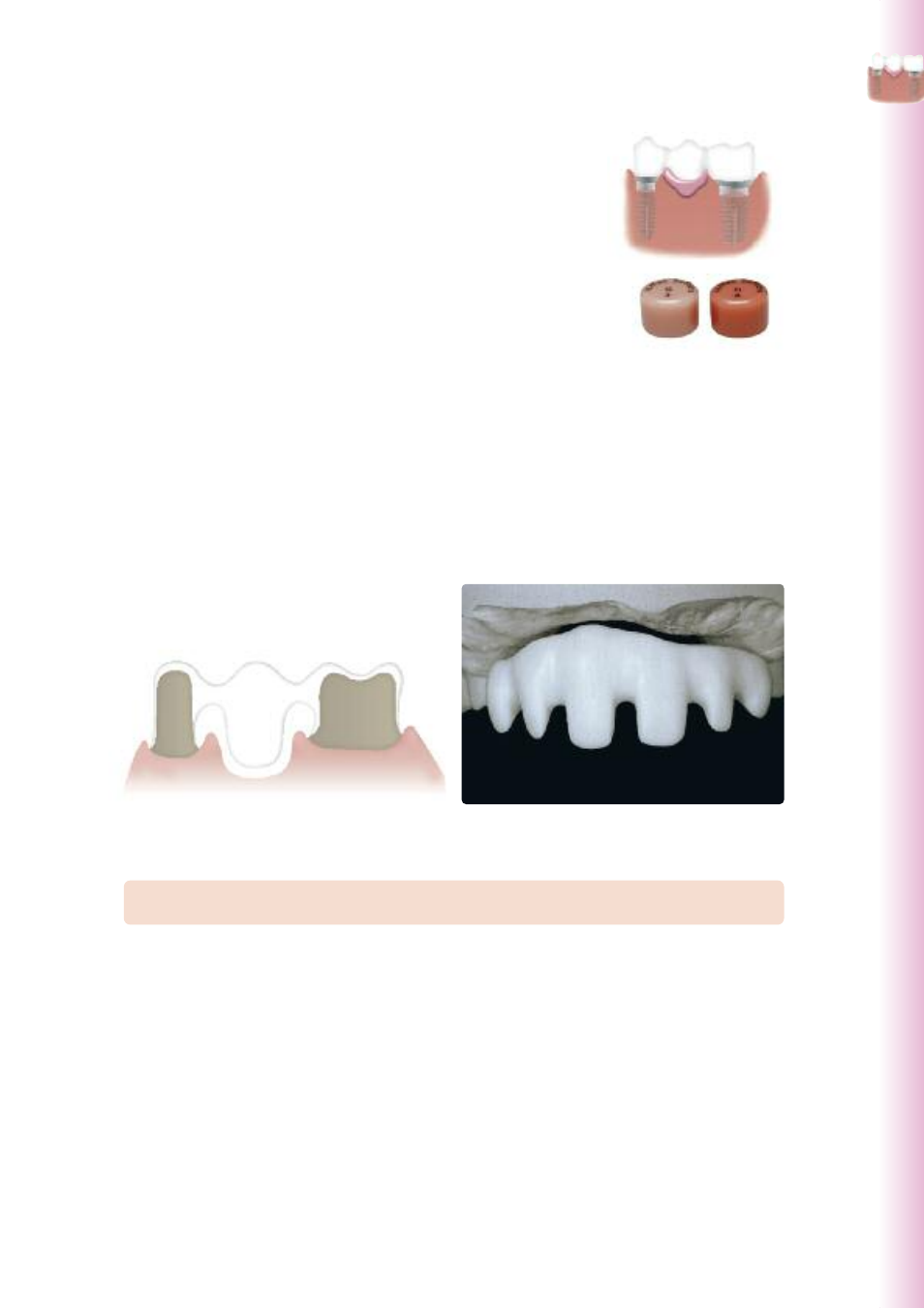E.max, Zirpress gingiva, Gingiva technique – Ivoclar Vivadent IPS e.max ZirPress User Manual
Page 47: Framework design criteria

47
e.max
®
ZirPress Gingiva
Gingiva Technique
IP
S
IPS e.max ZirPress Gingiva technique can be used to fabricate gingival parts in conjunction
with the press-on zirconium oxide. The advantages of this technique are the more
efficient working method and increased processing reliability mainly for larger restora-
tions. By using the press technique, it is possible to fabricate homogeneous precision
gingival portions which make time-consuming adjustments and corrective firing cycles a
thing of the past. The tooth-shaded portions are built up using the IPS e.max Ceram
layering materials, while the accuracy of fit of IPS e.max ZirPress Gingiva is maintained. In
addition, it is possible to characterize the restorations with IPS e.max Ceram Gingiva in
the Dentin and Incisal firing cycles.
Framework Design Criteria
The following guidelines have to be observed for the application of IPS e.max ZirPress Gingiva when designing the zirconi-
um oxide framework:
– The IPS e.max ZirCAD framework material is the high-strength component of your restoration and should therefore be
designed in such a way that it supports the shape of the restorations as well as the cusps. This applies to the cusp
support and the gingival parts.
– With atrophied alveolar ridges, the excess in available space must be compensated by the design of the framework and
not by IPS e.max ZirPress Gingiva press ceramic.
With atrophied alveolar ridges, the framework has to be adjusted to the course of the gingiva
in the basal area.
Sintered zirconium oxide framework, adjusted to the course of the gingiva in the basal area.
Failure to observe the stipulated framework design criteria and minimum thicknesses may result in clinical
failures, such as cracks, delamination and fracture of the restoration.
Please note:
– In order to ensure the desired gingiva shade as well complete pressing, a minimum thickness of 0.7 mm must be
observed.
– Free-standing (unsupported) gingival portions must not exceed a width of 2.5 mm.
G
in
g
iv
a
Te
ch
n
iq
u
e
